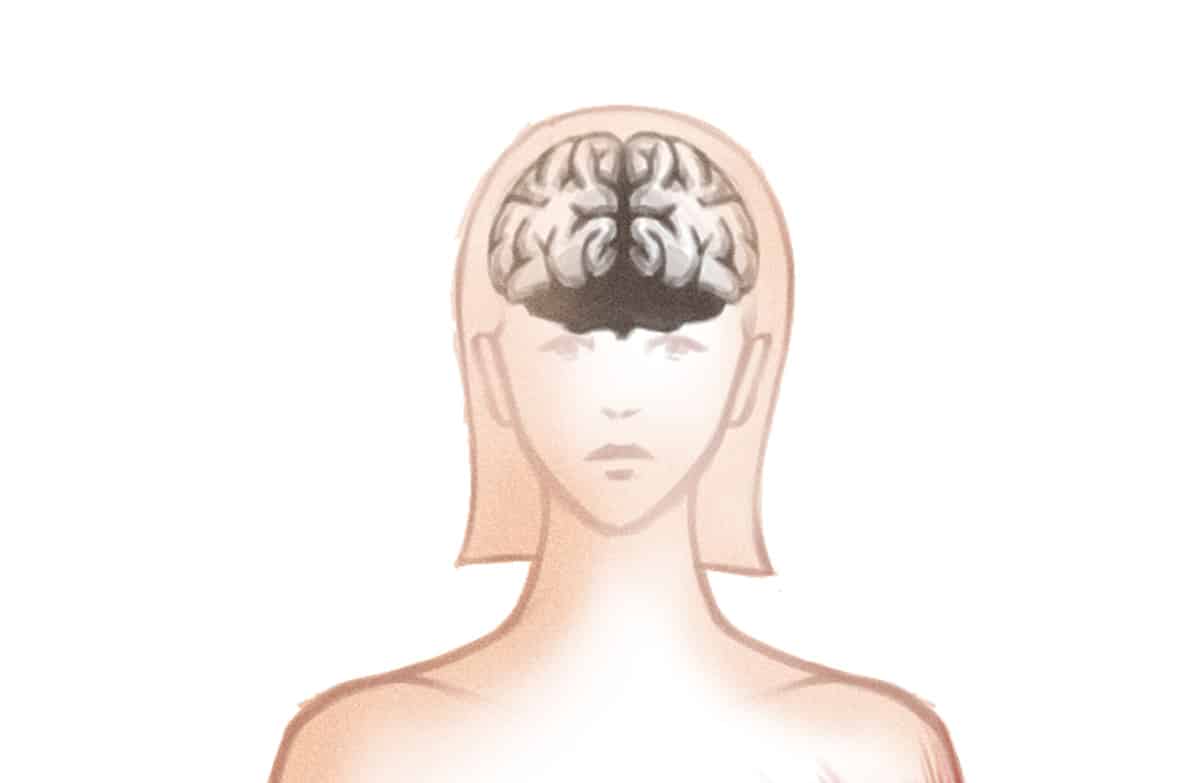If you’ve been around the Paleo world for any length of time, you’ve probably heard the advice to limit or avoid Omega-6 PUFA. The big reason is that it causes inflammation, which is involved in all kinds of chronic diseases. But there are a few other interesting tidbits about Omega-6 fats that you might not know.
What’s Omega-6 PUFA?

To start with, a quick refresher on Omega-6 fats. (If you already know this stuff, just scroll down to #1)
Omega-6 PUFA is a type of fat. It’s fairly rare in whole, natural foods. We didn’t get a lot of it in our ancestral diets, but that changed around the middle of the 20th century, when “vegetable oils” like soybean oil, peanut oil, and canola oil started getting big. Today, most people get a whole lot of Omega-6 fat – it’s in almost every kind of processed food you can imagine.
Unfortunately, that’s just more Omega-6 fat than our bodies are built to handle. A little bit of Omega-6 is totally fine – in fact, we need some of the stuff, or we’ll die. But a huge overdose isn’t healthy. (That's why Paleo eliminates industrial oils. They just have too much Omega-6 PUFA).
Very often, that overdose also comes along with an underdose of Omega-3 fats. If Omega-6 fats are the evil twin, Omega-3 fats are the good twin. Omega-3s are the anti-inflammatory, heart-healthy, all-around champs that you find in fish oil and seafood – you know, that stuff barely anyone eats enough of. You’ll see Omega-3s pop up a lot in this article because the ratio of Omega-6 to Omega-3 matters. If you raise or lower Omega-6s, you’re changing the ratio of Omega-6 to Omega-3. So it’s hard to talk about Omega-6 without at least mentioning Omega-3 as well.
We’ve already covered here how a diet high in Omega-6 PUFA (and low in Omega-3s) contributes to inflammation. That’s the Big Bad, the problem everyone knows about. But what about the Little Bads? Here are four lesser-known problems with a diet high in Omega-6 fats:
1. Reduced Absorption of Omega-3 Fats
The modern diet is too high in Omega-6 and too low in Omega-3. But in reality, the situation is even worse than it looks on the Nutrition Facts labels, because the more Omega-6s you eat, the fewer Omega-3s you can absorb.
In this study, researchers gave people either a diet high in saturated fat or a diet high in Omega-6 PUFA. Then they studied how well the people absorbed Omega-3 fats. Substituting saturated fat with Omega-6 PUFA reduced the absorption of Omega-3 fats and stopped people from incorporating the Omega-3s into their own fat tissue. Not good!
More Omega-6 fats don’t just contribute to inflammation; they also stop anti-inflammatory Omega-3s from getting in the door. It’s a double whammy.
2. Headaches
This study looked at the ways that changing dietary Omega-3 and Omega-6 fats can affect headache pain. The authors found that when people ate more Omega-3s and fewer Omega-6s, they had lower headache pain.
The explanation was basically that Omega-3 and Omega-6 fats are precursors for different types of endocannabinoids, chemicals in the brain that affect your ability to feel pain. The enocannabinoids derived from Omega-3 fats reduce physical pain perception, so they make headaches (and other types of pain) less awful. But there’s no equivalent benefit from Omega-6 fats. Remember from above that a diet high in Omega-6 fats reduces absorption of Omega-3s? That’s a whole lot of potential pain relief you’re not getting.
To put that in plain English, a diet low in Omega-6s but high in Omega-3s might help manage headaches, and the opposite (high in Omega-6s, low in Omega-3s) might be useless or worse.
3. Mental Health

A few different studies have looked at the effect of Omega-6 fats on mood and mental health, and most of them aren’t very encouraging.
- This study looked at women over time. The study found that women who ate fewer Omega-6 fats had a lower risk of developing symptoms of depression over 4.5 years.
- This study found a three-way tangle among depressive symptoms, inflammation, and diets high in Omega-6 PUFA (and low in Omega-3). Basically, the more depressed the subjects were, the more inflammation a high-O6 diet caused. The researchers concluded that “Diets with high n-6:n-3 PUFA ratios may enhance the risk for both depression and inflammatory diseases.” Ouch.
- This study found that pregnant women who ate more Omega-6 fats (and fewer Omega-3 fats) had higher levels of anxiety before birth.
Again, this is all tied up with Omega-3s – higher levels of Omega-3s have shown benefit for everything from Alzheimer’s disease to depression. But again, more Omega-6 fats reduce absorption of Omega-3s, so it’s all related. Even if you’re eating enough Omega-3 fats, it’s pretty clear from these studies that cutting down on Omega-6 could also be a good idea.
4. Asthma
In this study, researchers tested the relationship between dietary Omega-6 fats and asthma symptoms in 174 people with asthma. They found that people who ate a lot of Omega-6 PUFA had worse control of their asthma symptoms. Conversely, people who ate more Omega-3s and fewer Omega-6s had better control of their asthma symptoms.
This makes perfect sense: one of the big players in asthma is inflammation in the airway. That’s what causes asthma attacks. So it’s very logical that eating inflammatory Omega-6 fats would make asthma symptoms worse, and eating anti-inflammatory Omega-3 fats would reduce symptoms. But it’s nice to have a study directly corroborating that, even if it is still an association and it can’t directly prove a causal relationship.
If asthma and allergic diseases are interesting to you, you might also want to take a look at this study. It was done in mice, so all the usual mouse-study caveats apply, but it’s still pretty neat. The researchers found that a diet high in Omega-6 fats increased allergy symptoms in the mice and prevented them from developing a tolerance to their allergen.
5. (If You’re Pregnant) Your Baby’s Health
A mother’s diet during pregnancy affects her baby, and the fat quality is no exception.
- This study found that mothers who ate a diet high in Omega-6 fats (and low in Omega-3 fats) gave birth to babies with higher body fat percentage.
- This study found that mothers who ate a diet low in Omega-6 fats (and high in Omega-3 fats) and fewer Omega-6 fats had babies with lower systolic blood pressure.
These are association studies, because you can’t deliberately give pregnant women a high-Omega-6 diet just to see how badly it hurts the baby – that’s totally unethical. So we’re stuck with associations, and associations can’t prove causation. But in this case, they’re pretty suggestive and they fit with other relationships between obesity and inflammation.
Diet Guidelines: The Short Version
Just to repeat: nobody is calling to totally eliminate Omega-6 fats from your diet. Almost all foods have at least a little bit of Omega-6 fat, even vegetables! The trick is to avoid foods that make easy to eat too much Omega-6 PUFA, not to go crazy trying to get rid of it all.
- The worst culprits are industrial oils (corn oil, soy oil, peanut oil, “vegetable oil,” canola oil, etc.). Avoid these as much as possible.
- Be cautious with nuts and seeds. A sprinkle of walnuts on your salad to add crunch is fine, but don't treat them as a staple fod.
It’s also helpful to eat plenty of fish and seafood, especially fatty fish like salmon. Fish has lots of Omega-3 fats, which help to balance out the effects of Omega-6s.
As for Omega-3 supplements like fish oil: you probably don’t need them (unless you can’t eat fish for some reason). The ideal diet would be higher in Omega-3 than the typical American diet, but low in total PUFA content (Omega-3 + Omega-6). You can accomplish this very easily with food by avoiding industrial oils limiting nuts, and eating plenty of fish. Unless you have a specific reason to take fish oil, just leave it. (Learn more about fish oil here)





Leave a Reply